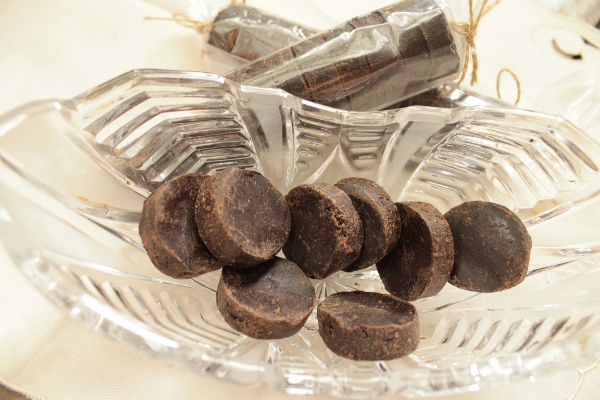Mexico tries to claim 'Manila mango' name as its own
Philippines wants to retain custody
By Lisa J. Adams
ASSOCIATED PRESS
June 19, 2005
MEXICO CITY – Since the thriving galleon trade between New Spain and the Philippines first brought seedlings of the Manila mango to Acapulco more than 200 years ago, Mexico has gradually made the fruit its own.
It now wants to officially adopt the name – but the Philippine government is fighting for custody.
ANTONIO AURELIO / Associated Press
Mexican growers filled a truck with Manila mangoes at Paso de Ovejas in Veracruz state June 2. Mexico is trying to claim the Manila mango name for itself.
As both countries seek to expand exports of mangoes and other fresh produce, Mexican growers have launched a novel effort to obtain a domain of origin for the Manila mango, a type of patent that would restrict the use of the name to mangoes grown in Mexico.
Producers seeking the domain of origin must apply for the designation from the appropriate agencies in their own government, while complying with World Trade Organization rules that regulate the global flow of commerce.
A domain of origin certifies a product's excellence, increasing its exports. It also protects the product's name from infringement by others – in this case, growers in the Philippines, where mangoes are called Manila Super Mango or Carabao.
Although Mexico is the world's largest mango exporter, Manila mangoes represent less than 1 percent of its $130 million in annual exports because of the variety's fragility and a fruit-fly problem that is also an obstacle to obtaining the domain of origin.
But Mexican growers are working to resolve those problems and convert the small, pale-yellow Manila – whose delicate skin and intensely juicy flesh make it one of Mexico's favorite domestically consumed mangoes – into an export success, including in markets targeted by the Philippines.
Mexico has gained some mileage from the Manila name through other mangoes. In the United States, the name Honey Manila is often applied to the widely exported Ataulfo variety from southern Chiapas state, "because the Americans can't pronounce Ataulfo," said Blanca Nelly Partida, a representative of Mexico's national mango export association, EMEX.
The Filipinos don't want to lose the right to use a name that originated in their country.
"Mexico acknowledges that their Manila mango variety came from the Philippines," said Adrian S. Cristobal, director-general of the Philippine Intellectual Property Office, or IPO.
"By using the name Manila mango, the public can be misled as to the true origin of the fruit," Cristobal said. "This is essentially unfair competition."
While the designation usually is based on a product's geographic origin – such as the town of Tequila, Mexico, or the province of Champagne, France – the Manila mango's domain would refer to Mexican hybridization and cultivation practices, cultural distinctions that supposedly make the variety unique.
The WTO does not recognize – or regulate – domains of origin based on cultural distinctions, however, so countries work out mutually acceptable agreements with their trading partners, Mexico agricultural economist Yolanda Trapaga said.
Mexico's next step is "to start hashing this out with the Philippines," she said. "There has to be a bilateral negotiation, to see where it goes."
The way Mexico sees it, the Manila mango long ago became a product unique to this country.
Although Manila seedlings arrived in Mexico from the Philippines in 1779 during the galleon trade, the variety was crossed with other mangoes over the years, so today's Manila mangoes possess a genetic mix found only in Mexico, said Héctor Cabrera, an expert with Mexico's National Institute of Forest, Agricultural and Livestock Research.
Mexico shipped more than $130 million in mangoes in 2004, the majority to the United States, with smaller markets in Canada, Japan and European countries, the Economy Department reported.
The Philippines shipped $31 million to its four top markets in 2004: Japan, Hong Kong, South Korea and China, according to the country's trade department.
Philippines growers eventually hope to increase their mango exports to $70 million, the trade department said.





 Quote
Quote






